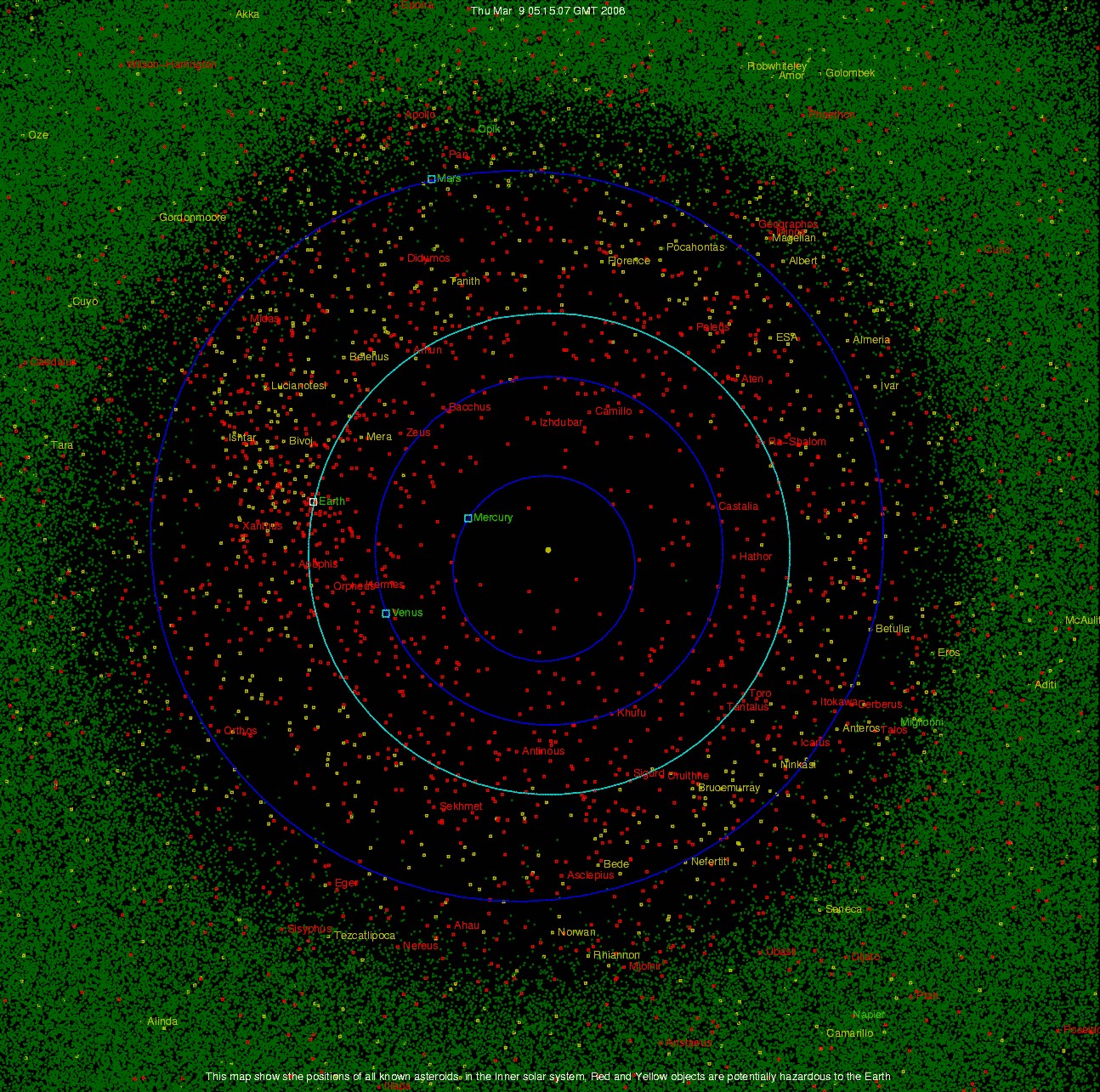

Fox News Flash top headlines for May 1
Once an asteroid is identified and its orbit determined, its future path can be predicted very accurately. Most asteroids don't come anywhere near the Earth.
Fox News Flash top headlines for May 1 are here. Check out what's clicking on Foxnews.com
A 1,110-foot-wide asteroid named for the Egyptian god of chaos (and possibly a Stargate SG-1 character) will fly past Earth in 2029 within the distance of some orbiting spacecraft, according to reports.

The asteroid, 99942 Apophis, will come within 19,000 miles of Earth on April 13, a decade from now, but scientists at the Planetary Defense Conference are already preparing for the encounter, Newsweek reported. They plan to discuss the asteroid’s effects on Earth’s gravity, potential research opportunities and even how to deflect an incoming asteroid in a theoretical scenario.
Scientists say most asteroids that pass near Earth aren’t more than 30 feet wide, making Apophis, named for an Egyptian god of chaos, a rare opportunity for research.
The asteroid will be visible to the naked eye and will look like a moving star point of light, according to NASA. It will pass over the United States in the early evening, according to WUSA 9.
Apophis was discovered in 2004 and, after tracking it for 15 years, scientists say the asteroid has a 1 in 100,000 chance of striking Earth decades in the future – after 2060, Newsweek reported.
Three asteroids are expected to hurtle past Earth today (Sept. One will pass as near as 310,000 miles (500,000 kilometers) — closer than any potential asteroid near-miss for the next three months.Asteroid 2019 QZ3 flew by at 6:49 a.m. ET; asteroid 2019 RG2 follows at around 3:13 p.m. ET, and the third, asteroid 2019 QY4, flashes past at 9:10 p.m. ET, the.QZ3 is the biggest of the trio, with a diameter of 220 feet (67 meters), while RG2 and QY4, respectively measure approximately 66 feet (20 m) and 52 feet (16 m) in length, according to NASA's (CNEOS).Related:, known as near-Earth objects (NEOS), are nudged by the gravity of neighboring planets into orbital paths that carry them fairly close to our cosmic address. But 'close' in space is a relative term: At the closest point in their passage, all three of today's asteroid visitors will be farther from Earth than the moon is, according to CNEOS.RG2 is the fastest asteroid, speeding by at a velocity of nearly 50,000 miles per hour (80,000 kilometers/hour), while QY4 is moving at just over 17,000 mph (27,000 km/h).
QZ3 is the slowpoke of the group, at 16,700 mph (26,800 km/h), according to IBT. Though QZ3 is the biggest, it is also the furthest from Earth, at a distance of approximately 2.3 million miles from our planet, CNEOS reported.Another asteroid — 2006 QV89 — was previously thought to potentially follow a trajectory that could slam into Earth, with a on Sept. But experts announced in July that the asteroid did not appear in the area of the sky where it would have shown up if it were on a collision course with our planet, representatives with the European Southern Observatory (ESO).CNEOS representatives that QV89 was no threat to Earth, and that the asteroid would instead rocket past our planet on Sept.
27 'at a comfortable distance of 4.3 million miles (6.9 million km), about 18 times the distance of the Moon.' Currently, there are 878 NEOs that demonstrate some risk — however small it might be — of colliding with Earth, according to a list maintained by (ESA).
World of warcraft download. Click on 'World of Warcraft', then click 'Remove/Uninstall.' Click the Add or Remove Programs icon.
Of these, the biggest (and second on the list) is asteroid 1979 XB. Princess maker 2 guide. Measuring about 2,300 feet (700 m) in length and traveling at more than 58,000 mph (93,300 km/h), the massive space rock is expected to come calling on Dec. 14, 2113, ESA reported.